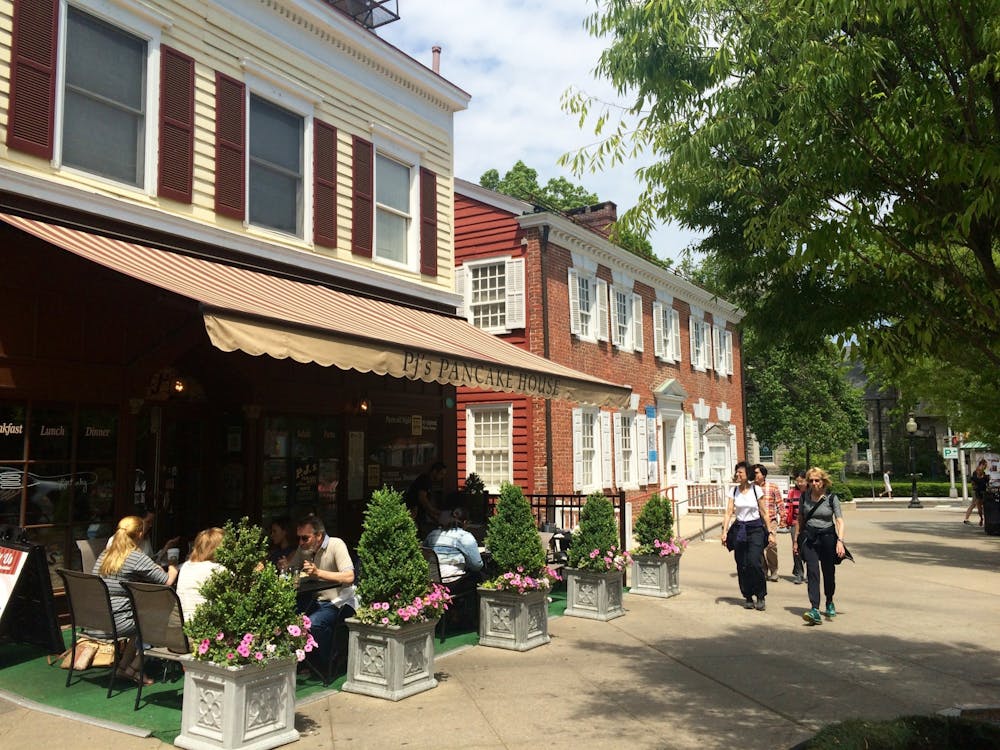It's a series of small disasters," Victoria Lewis '10 said as she looked on at the practicing models and working volunteers in a mostly empty Dillon Gymnasium last Friday afternoon. "But it all comes together in the end."
Sure enough, by 9 p.m., rows of chairs filled the once empty basketball courts, surrounding an elevated stage bathed in spotlights. Music blared out of speakers on either sides of the stage, and models readied themselves for their catwalks behind black cloth dividers.
That night, April 3, would be the eighth annual Fashion Speaks Fashion Show, which benefits Autism Speaks and the Eden Institute, two New Jersey-based nonprofit organizations focusing on autism.
Service in Style, the student group that organizes the fashion show, first began donating money to Autism Speaks and the Eden Institute three years ago, when the chair of the fashion show at the time had a brother who was autistic.
Like many events these days, this year's show departed from previous ones in that it was affected by the financial climate. Most of the clothing worn by the models was on loan from local stores, and many stores that were once willing to loan out clothes to gain publicity no longer wished to cover the costs of letting students borrow their clothes for a fashion show.
Despite reluctance from some brands, the show still featured outfits from many designers with stores in town, including Stacy Gemma, J. McLaughlin, Decked, Tulle and Man vs. Machine. The show also featured other brands, including the London-based Ted Baker, the online store Colette a Boutique, and Dalia, a brand featured on Dancing with the Stars and America's Next Top Model.
Fashion Speaks is the only event that Service in Style organizes each year. Ensuring the smooth operation of a fashion show takes a lot more work than it may seem.
"It takes a lot of details for the show to come together," Lewis said. The preparation work includes finding a venue and a carpenter to make the raised stage, as well as fundraising to ensure that a profit can be made from the show to be donated to the charities.
And, of course, picking the models.
"We wanted students from different campus groups," Nell Diamond '11 said. As the chair responsible for selecting the models, Diamond matched models with outfits based on their appearance and what sorts of clothing best suited their looks.
Diamond, who also modeled in the show, rehearsed with the 25 other models twice a week for the last month. The show's organizers ramped up rehearsals to every day the week of the show.
But you wouldn't know that, judging from the first line presented, J. McLaughlin, which featured only male models. Many of them seemed unsure of what to do with their arms as they moved their legs down the runway, creating an appearance of constraint, as if their arms - held rigidly at their sides - were a sort of straitjacket binding their upper torso into a locked position while their lower body moved freely.

The restricted walking appeared especially awkward with the preppy shirts and polos, paired with shorts or swim trunks. None of the men wore shoes, which seemed to be the style, but actually detracted from the outfits, which could have been better paired with Sperry Top-Siders or leather flip flops.
At the end of the J. McLaughlin walk, the last model strode to the end of the runway and ripped off his shirt, like a caricature of an Abercrombie & Fitch model. All was well until he began to make his way back up the runway, when instead of suavely carrying his shirt on his shoulder he managed to smack himself in the face with it.
The female models who followed did their hours of rehearsal more justice. Dressed in Stacy Gemma, the ladies exuded an air of professional confidence as they strutted down the runway.
Most of the ladies' fashions were fun, flirty skirts and dresses, suitable for the upcoming summer months.
Particularly memorable was a floor-length gown from Dalia. Tightly fitting from the torso to the knees and ending in a mermaid fin, the dress had the stately glamour of an Oscar gown, yet the floral print kept it casual and appropriate for a non-red carpet function.
Detracting from such displays was the presence of two emcees, Jack Breslauer '10 and Katy Pinke '10. Neither seemed prepared to speak in front of a couple of people, let alone the entire audience. Both recited their jokes monotonously, only appearing to realize mid-sentence that they were supposed to be humorous. Both read from their lines with a hesitation hinting that they might never have seen the script in their life.
Fortunately, there was still plenty in the show to keep viewers entertained. Most popular with the audience was the "shirtless" line, in which both male and female models made their ways down the runway in just blazers. Yet the shirtlessness looked neither deliberate nor artful. The professionalism of suits and blazers seems at odds with the suggestiveness of wearing only lingerie. Perhaps if the blazers had been open, the absence of shirts would have been more noticeable, and it would not have appeared as if the women were simply wearing extremely low-plunging tops.
The show ended as it began, with only male models. However, this time around, the men seemed to relax. They began to move their arms more, even venturing to smack each other's butts on stage. One pair of guys walked down the runway in matching shiny, colorful backpacks and no shirts - if they would only wear that in real life, life would certainly be a lot more entertaining.
The models seemed to be having fun.
"It is really difficult to be really, really, really, really, really, really ridiculously good looking," Eric Vreeland '10, one of 11 male models, said with a laugh, "The show gives me a chance to shine."







